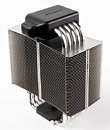
Intel Gives Some Models of Xeon a Price-cut
Following price-cuts for some of the desktop offerings (covered here) , Intel has cut the prices of some models of the enterprise-segment Xeon processor, reports industry observer DigiTimes.
The Xeon X3220, X3210 and E3110 get a roughly 12% cut with the X3220 and X3210 both dropping from an original price of US $224 to US $198 with the E3110 price dropping from US $188 to US $167, according to the company.
The Xeon X3220, X3210 and E3110 get a roughly 12% cut with the X3220 and X3210 both dropping from an original price of US $224 to US $198 with the E3110 price dropping from US $188 to US $167, according to the company.







